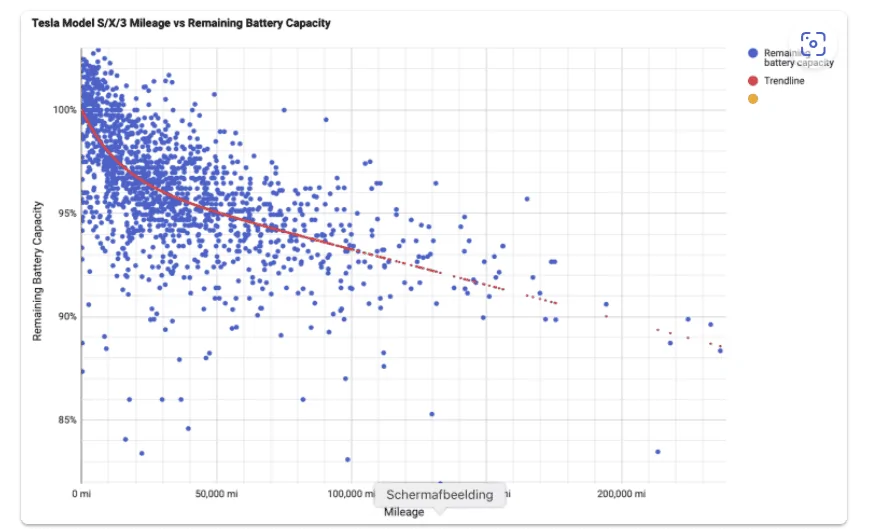GDN
Well-known member
- First Name
- Greg
- Joined
- Feb 15, 2022
- Threads
- 94
- Messages
- 3,749
- Reaction score
- 4,809
- Location
- Dallas, TX
- Vehicles
- Lightning Lariat ER, Performance Y
- Occupation
- IT
Driving style can definitely impact the BMS as well. I drove a Tesla Model 3 for almost 4 years. I used Teslafi, which is an incredible service that tracks every mile driven along with charges, etc. The Ford API and data stream isn't good enough to be able to capture good stats.
However, my Model 3 when compared to about 70 other cars with the same number of miles was in the lower 10% of range being reported. I drove many very small drives 2 to 5 miles. Rarely had a long drive. My 310 mile rated car was down to about 270 miles max on a charge.
Following advice and research - I did two things. I would let the charge drop to about 10% before charging to about 93%. I did that for a few charges and I purposely got out and took a few 250 mile drives. This gave the battery and BMS a chance to recalculate and level out any anomalies in charges of cells. Within 2 weeks I had the range on my car back up to about 285.
When I returned to my short drives, the range started to drop right back down.
Drive and charge habits can definitely affect what the BMS sees and the health of your battery.
However, my Model 3 when compared to about 70 other cars with the same number of miles was in the lower 10% of range being reported. I drove many very small drives 2 to 5 miles. Rarely had a long drive. My 310 mile rated car was down to about 270 miles max on a charge.
Following advice and research - I did two things. I would let the charge drop to about 10% before charging to about 93%. I did that for a few charges and I purposely got out and took a few 250 mile drives. This gave the battery and BMS a chance to recalculate and level out any anomalies in charges of cells. Within 2 weeks I had the range on my car back up to about 285.
When I returned to my short drives, the range started to drop right back down.
Drive and charge habits can definitely affect what the BMS sees and the health of your battery.
Sponsored


